UGC NET Paper 1 Practice Test - 10 - UGC NET MCQ
30 Questions MCQ Test - UGC NET Paper 1 Practice Test - 10
The population information is called parameter while the corresponding sample information is known as
A researcher intends to explore the effect of possible factors for the organization of effective mid-day meal interventions. Which research method will be most appropriate for this study?
Identify the correct sequence of research steps:
Identify the advantages of LED Monitor:
- It includes a broader dimming range.
- It is a more reliable monitor.
- It is often less expensive.
- It consumes less power (20 watts), and run on a lower temperature.
- It has a more dynamic contrast ratio.
Choose the correct answer from the options given below:
Given below are two statements
Statement I: The length and breadth of a rectangle are increased by 10% and 20% respectively, then its area increases by 23%.
Statement II: In 12 hours, the hour hand and the minute hand coincide 11 times.
In light of the above statements, choose the correct answer from the options given below:
A teacher is said to be fluent in asking questions, if he can ask
Match the items of the first set with that of the second set in respect of evaluation system.
Choose the correct code:
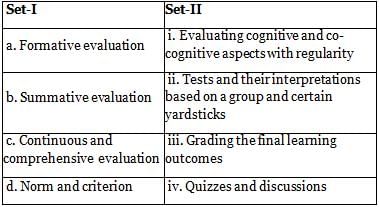
Which of the following qualities is most essential for a teacher?
For use during teaching, from the list given below, identify questions that are 'CONTENT TYPE' rather than 'PROCESS TYPE'
A. Divergent questions
B. Fact-based questions
C. Concept-based questions
D. Lower order questions
E. Higher-order questions
Choose the correct answer from the options given below:
Directions: Read the given passage carefully and answer the following question:
Heritage conservation practices improved worldwide after the International Centre for the Study of the Preservation and Restoration of Cultural Property (ICCROM) was established with UNESCO’s assistance in 1959. The inter-governmental organisation with 126 member states has done a commendable job by training more than 4,000 professionals, providing practice standards, and sharing technical expertise. In this golden jubilee year, as we acknowledge its key role in global conservation, an assessment of international practices would be meaningful to the Indian conservation movement. Consistent investment, rigorous attention, and dedicated research and dissemination are some of the positive lessons to imbibe. Countries such as Italy have demonstrated that prioritising heritage with significant budget provision pays. On the other hand, India, which is no less endowed in terms of cultural capital, has a long way to go. Surveys indicate that in addition to the 6,600 protected monuments, there are over 60,000 equally valuable heritage structures that await attention. Besides the small group in the service of Archaeological Survey of India, there are only about 150 trained conservation professionals. In order to overcome this severe shortage, the emphasis has been on setting up dedicated labs and training institutions. It would make much better sense for conservation to be made part of mainstream research and engineering institutes, as has been done in Europe.
Increasing funding and building institutions are the relatively easy part. The real challenge is to redefine international approaches to address local contexts. Conservation cannot limit itself to enhancing the art-historical value of the heritage structures, which international charters perhaps overemphasise. The effort has to be broad-based: It must also serve as a means to improving the quality of life in the area where the heritage structures are located. The first task, therefore, is to integrate conservation efforts with sound development plans that take care of people living in the heritage vicinity. Unlike in western countries, many traditional building crafts survive in India, and conservation practices offer an avenue to support them. This has been acknowledged by the Indian National Trust for Art and Cultural Heritage charter for conservation but is yet to receive substantial state support. More strength for heritage conservation can be mobilised by aligning it with the green building movement. Heritage structures are essentially eco-friendly and conservation could become a vital part of the sustainable building practices campaign in future.
Q. The inter-government organisation was appreciated because of
Directions: Read the given passage carefully and answer the following question:
Heritage conservation practices improved worldwide after the International Centre for the Study of the Preservation and Restoration of Cultural Property (ICCROM) was established with UNESCO’s assistance in 1959. The inter-governmental organisation with 126 member states has done a commendable job by training more than 4,000 professionals, providing practice standards, and sharing technical expertise. In this golden jubilee year, as we acknowledge its key role in global conservation, an assessment of international practices would be meaningful to the Indian conservation movement. Consistent investment, rigorous attention, and dedicated research and dissemination are some of the positive lessons to imbibe. Countries such as Italy have demonstrated that prioritising heritage with significant budget provision pays. On the other hand, India, which is no less endowed in terms of cultural capital, has a long way to go. Surveys indicate that in addition to the 6,600 protected monuments, there are over 60,000 equally valuable heritage structures that await attention. Besides the small group in the service of Archaeological Survey of India, there are only about 150 trained conservation professionals. In order to overcome this severe shortage, the emphasis has been on setting up dedicated labs and training institutions. It would make much better sense for conservation to be made part of mainstream research and engineering institutes, as has been done in Europe.
Increasing funding and building institutions are the relatively easy part. The real challenge is to redefine international approaches to address local contexts. Conservation cannot limit itself to enhancing the art-historical value of the heritage structures, which international charters perhaps overemphasise. The effort has to be broad-based: It must also serve as a means to improving the quality of life in the area where the heritage structures are located. The first task, therefore, is to integrate conservation efforts with sound development plans that take care of people living in the heritage vicinity. Unlike in western countries, many traditional building crafts survive in India, and conservation practices offer an avenue to support them. This has been acknowledged by the Indian National Trust for Art and Cultural Heritage charter for conservation but is yet to receive substantial state support. More strength for heritage conservation can be mobilised by aligning it with the green building movement. Heritage structures are essentially eco-friendly and conservation could become a vital part of the sustainable building practices campaign in future.
Q. Which of the following statements best describe(s) the major challenge faced in the implementation of international conservation policies?
Direction: Given below are two statements, one is labelled as Assertion A and the other is labelled Reason R.
Assertion A: A teacher should try to collect as much information about the learners’ characteristics as he/she can.
Reason R: This helps in modifying instructions as per the needs of the students.
Organisational communication can also be equated with
Consider the following statements about the Draft Environment Impact Assessment (EIA) Notification:
- The Ministry of Environment, Forest, and Climate Change is the nodal Ministry for notifying the EIA Notification, under the Environment (Protection) Act, 1986.
- The public reporting of the environmental violations needs to be mandatorily taken cognizance of by the authorities.
- All the off-shore projects, located beyond 12 nautical miles, are exempted from public consultation.
Which of the statements given above are correct?
Chinese Cultural Revolution leader Mao Zedong used a type of communication to talk to the masses which is known as
Direction: Read the given passage and answer the questions that follow.
Martin Luther King Jr. was an African-American leader in the U.S. He lost his life while performing a peaceful protest for the betterment of blacks in America. His real name was Michael King Jr. He completed his studies and attained a Ph.D. After that, he joined the American Civil Rights Movement. He was among one of the great men who dedicated their lives to the community.
There are two reasons for someone to be famous either he is a good man or a very bad person. Martin Luther King was among the better ones who dedicated his life to the community. Martin Luther King was also known as MLK Jr. He gained popularity after he became the leader and spokesperson of the Civil Rights Movement in the 1950s and 1960s.
Martin Luther King was an American activist, minister, and humanitarian. Also, he had worked for several other causes and actively participated in many protests and boycotts. He was a peaceful man that has faith in Christian beliefs and non-violence. Also, his inspiration for them was the work of Mahatma Gandhi and Nelson Mandela. For his work in the field of civil rights, the Nobel Committee awarded him the Nobel Peace Prize.
He was a great speaker that motivated the blacks to protest using non-violence. Also, he uses peaceful strategies like a boycott, protest march, and sit-ins, etc. For protests against the government. King is one of the renowned leaders of the African-American who worked for the welfare of his community throughout his life. He was very famous among the community and is the strongest voice of the community. King and his fellow companies and peaceful protesters forced the government several times to bend their laws. Also, the kings’ life made a seismic impact on the life and thinking of the blacks. He was among one of the great leaders of the era.
Q. What is the antonym of peaceful?
Direction: Read the given passage and answer the questions that follow.
Martin Luther King Jr. was an African-American leader in the U.S. He lost his life while performing a peaceful protest for the betterment of blacks in America. His real name was Michael King Jr. He completed his studies and attained a Ph.D. After that, he joined the American Civil Rights Movement. He was among one of the great men who dedicated their lives to the community.
There are two reasons for someone to be famous either he is a good man or a very bad person. Martin Luther King was among the better ones who dedicated his life to the community. Martin Luther King was also known as MLK Jr. He gained popularity after he became the leader and spokesperson of the Civil Rights Movement in the 1950s and 1960s.
Martin Luther King was an American activist, minister, and humanitarian. Also, he had worked for several other causes and actively participated in many protests and boycotts. He was a peaceful man that has faith in Christian beliefs and non-violence. Also, his inspiration for them was the work of Mahatma Gandhi and Nelson Mandela. For his work in the field of civil rights, the Nobel Committee awarded him the Nobel Peace Prize.
He was a great speaker that motivated the blacks to protest using non-violence. Also, he uses peaceful strategies like a boycott, protest march, and sit-ins, etc. For protests against the government. King is one of the renowned leaders of the African-American who worked for the welfare of his community throughout his life. He was very famous among the community and is the strongest voice of the community. King and his fellow companies and peaceful protesters forced the government several times to bend their laws. Also, the kings’ life made a seismic impact on the life and thinking of the blacks. He was among one of the great leaders of the era.
Q. What is the synonym of Attained?
Direction: Read the given passage and answer the questions that follow.
Martin Luther King Jr. was an African-American leader in the U.S. He lost his life while performing a peaceful protest for the betterment of blacks in America. His real name was Michael King Jr. He completed his studies and attained a Ph.D. After that, he joined the American Civil Rights Movement. He was among one of the great men who dedicated their lives to the community.
There are two reasons for someone to be famous either he is a good man or a very bad person. Martin Luther King was among the better ones who dedicated his life to the community. Martin Luther King was also known as MLK Jr. He gained popularity after he became the leader and spokesperson of the Civil Rights Movement in the 1950s and 1960s.
Martin Luther King was an American activist, minister, and humanitarian. Also, he had worked for several other causes and actively participated in many protests and boycotts. He was a peaceful man that has faith in Christian beliefs and non-violence. Also, his inspiration for them was the work of Mahatma Gandhi and Nelson Mandela. For his work in the field of civil rights, the Nobel Committee awarded him the Nobel Peace Prize.
He was a great speaker that motivated the blacks to protest using non-violence. Also, he uses peaceful strategies like a boycott, protest march, and sit-ins, etc. For protests against the government. King is one of the renowned leaders of the African-American who worked for the welfare of his community throughout his life. He was very famous among the community and is the strongest voice of the community. King and his fellow companies and peaceful protesters forced the government several times to bend their laws. Also, the kings’ life made a seismic impact on the life and thinking of the blacks. He was among one of the great leaders of the era.
Q. How did Martin Luther King Jr. Lost his life?
Which of the following symbols is must and has special meaning in an E-mail address?
Match List I with List II.
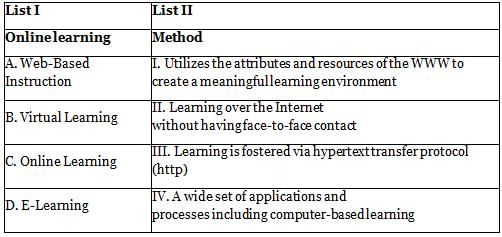
Choose the correct answer from the options given below:
Directions: Choose the correct alternative that will complete the series below.
DEB, IJG, NOL, ?, XYV
Direction: Study the following line graphs and answer the given questions.
The graph shows the ratio of marks of History to Geography of 7 students in an examination.
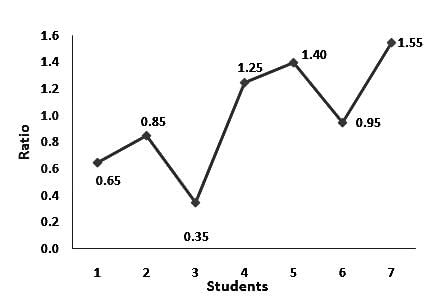
Q. How many students got more marks in History than in Geography?
Direction: Study the following line graphs and answer the given questions.
The graph shows the ratio of marks of History to Geography of 7 students in an examination.
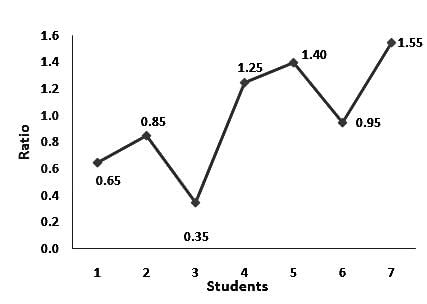
Q. Percentage increase of marks in Geography from student 3 to 4 is:
Direction: Study the following line graphs and answer the given questions.
The graph shows the ratio of marks of History to Geography of 7 students in an examination.

Q. Which of the following students got less marks in History than in Geography?
A student was asked to multiply a number by 5/2, but he divided that number by 5/2. His result was 21 less than the correct answer. The number was
The average of twelve numbers is 39. The average of the last five numbers is 35, and that of the first four numbers is 40. The fifth number is 6 less than the sixth number and 5 more than the seventh number. The average of the fifth and sixth numbers is:
Directions: In making decisions about an important question, it is desirable to be able to distinguish between 'strong' arguments and 'weak' arguments. 'Strong' arguments are those which are both important and directly related to the question. 'Weak' arguments are those which are of minor importance and also may not be directly related to the question or may be related to a trivial aspect of the question.
The given question is followed by arguments numbered I and II. You have to decide which of the arguments is/are 'strong' argument(s) and which is/are 'weak' argument(s) and mark your answer accordingly.
Q. Should US gun laws be radically changed to prevent the recurrence of mass shooting incidents?
Arguments:
I. Yes, Texas, the location of the latest deadly mass shooting, allows its residents to openly carry assault rifles.
II. No, the US is an independent state and the right of people to keep and bear arms cannot be infringed.
Which one of the following institutions were established as a consequence to the closure of inter-University Board brought in for cooperation among the university in the field of education and allied areas?
Which of the following diagrams indicates the best relation among paper, wood and matchstick?



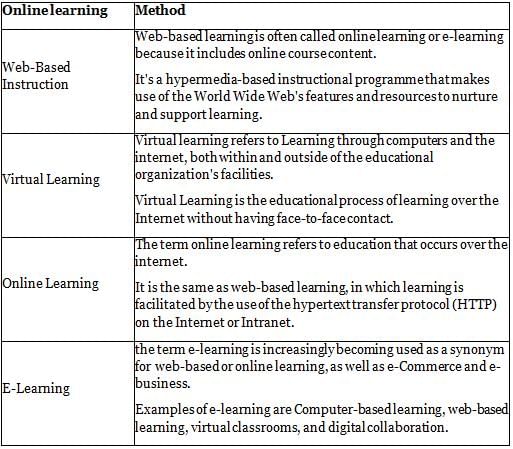
 = 21
= 21 = 21
= 21













